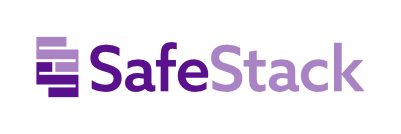Small Teams Build the Future. Let's Make Sure They're Secure From Day One.
The next breakthrough won't come from a tech giant's 10,000-person engineering organization. It'll come from a team of 30 developers in a garage, a co-working space, or scattered across time zones on Slack.
We believe software should be safe. Not just secure against known threats, but truly safe, protected against whatever challenges come next. And AppSec should be easy, not a luxury reserved for tech giants.
Small teams are building the future. They're moving fast, iterating boldly, and solving problems that bigger companies are too slow to tackle. But there's a shadow following every line of code they ship: security.
The Application Security Challenge for Small Teams
Here's the conversation happening in startups and scale-ups everywhere:
CEO: "We need to take security seriously. We're handling customer data, we want that enterprise deal, and honestly, I can't sleep at night."
CTO: "Agreed. But a security engineer costs $200K minimum, plus another $50K for tools, and they'll need six months just to get up to speed. We're not ready for that."
CEO: "So what do we do?"
CTO: "We'll handle it later."
And there it is. The security tax that small teams can't afford to pay. The invisible barrier that says "security is for companies with headcount and budgets, not for teams building the next big thing."
This isn't just unfair. It's dangerous.
Why Delaying Security Puts Your Business at Risk
Here's what happens when security waits for 'later':
Customer trust disappears overnight. That first breach doesn't just lose you data; it loses you the customers who believed in you when you were small.
Compliance becomes a scramble. When that enterprise client asks about your SOC 2 or ISO 27001 compliance, "we're working on it" doesn't close deals.
Technical debt compounds brutally. Security vulnerabilities found in production cost 30 times more to fix than catching them during development. That's not just money—it's momentum lost.
Team morale takes a hit. Nothing burns out developers faster than dropping everything for emergency security patches, over and over again.
The cruel irony? The teams that need security most can afford it least. The companies building transformative products are forced to choose between security and survival.
Until now.
A New Paradigm: Security That Grows With You
What if security didn't require a $200K salary line and a six-month hiring process? What if you could build security into your DNA from day one, without derailing your roadmap or your runway?
That's exactly why we built SafeStack's Managed Application Security Service. This new offering is launched in collaboration with our trusted global partners—Monorail Technology, Exfiltra, and SafeAdvisory—covering regions across the United States, New Zealand, Australia, and Europe.
We asked a simple question: What would application security look like if it were designed for teams of 20-100 developers, not enterprises with unlimited budgets?
The answer is a complete security program that you don't have to build yourself:
World-class training for your entire team. Your developers learn secure coding from day one. Not boring checkbox compliance—real skills that make them better engineers.
Purpose-built AppSec management. Tools, templates, workflows, and assessments designed specifically for application security. No Frankenstein combinations of generic platforms.
Expert guidance when you need it. Dedicated security consultants who've built AppSec programs before. They don't just advise—they roll up their sleeves and help you execute.
Hands-on implementation. This isn't consulting theater. It's a partnership where we help you build security practices that actually stick.
Your 90-Day Security Transformation Timeline
Let's get specific. Here's what teams achieve with SafeStack:
In 90 days: Your developers are trained and writing more secure code. You have documented security strategy, clear metrics, and an active vulnerability management process. Security champions are emerging from your team. You're collecting compliance evidence systematically, not frantically.
And you won't do this alone. Your dedicated security consultant guides you through every step—from assessment to implementation to measuring progress.
In 12 months: You've reduced security vulnerabilities by 70%. You're making substantial progress toward compliance requirements. Your AppSec program looks like what larger companies have—but you built it with a fraction of the cost and time.
Most importantly? You did this without a single security hire. Your team learned, grew, and built security into how they work.
Managed AppSec Cost Comparison: $17K vs $270K
Traditional approach to security:
Security engineer: $200,000+
Security tools: $50,000+
Training programs: $20,000+
Time to effectiveness: 6-12 months
Year 1 total: $270,000+
SafeStack Managed Application Security:
Complete program: Starting at $17,750
All tooling included
Training for all developers included
Time to effectiveness: Day one
Year 1 total: $17,750
That's not a typo. That's a fundamental reimagining of what security costs and who it's for.
Enterprise-Grade Security for Small Development Teams
For too long, security has been something only well-funded companies could afford. It created a two-tier system: the secure giants and the vulnerable innovators.
But the teams building tomorrow's breakthroughs shouldn't have to choose between security and speed, between protection and progress.
Small teams build the future. They deserve enterprise-grade security from day one, not as a luxury, but as a foundation.
With SafeStack, security isn't what you add when you "make it." It's how you make it in the first place.
Because the next big thing should be secure from the very first commit.
Ready to build security into your team's DNA?
Join 200+ engineering teams building mature AppSec programs without massive budgets.
Learn more at the service website
Email us: hello@safestack.io
